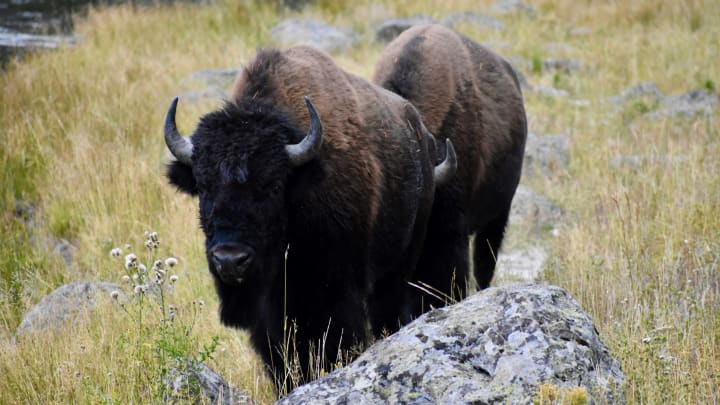Yellowstone National Park Warns Visitors of Current Bison Rut Season

On Sunday, August 18, Yellowstone officials reminded park visitors that bison rut season is in "full swing" and to remain mindful of the animals in the park.
"Bison are unpredictable and can run three times faster than humans, " Yellowstone National Park stated in their recent Facebook post. "Use extra caution and give them additional space during this time."
Bison are a major attraction at Yellowstone National Park, as they make up the largest bison population on public land in the United States. With this park being a tourist location, it is important for visitors to be mindful and respectful of this incredible species.
According to the National Park Service (NPS), breeding can begin in early June, in which mature bulls will compete in mixed-sex groups for mating purposes. By the end of September, breeding season will have come to an end. The average female bison gestation period is approximately 9.5 months, with one calf being born in the spring.
While in the midst of breeding season, it can be expected that bison will be on high alert and will be notably more aggressive.
"Males will roll violently on the ground to display aggression," the National Park Service stated. "A tail held high in a 'question mark' fashion indicates a threat or challenge." The NPS explained that this positioning occurs when the male is leading a female away for potential mating.
It is not uncommon to hear intense bellowing sounds coming from bison, particularly during rut. However, they tend to have a large amount of nonverbal communication. This is when it's critical to pay attention to their body positioning and movements.
All visitors should remain a safe distance away from any animal, regardless of the season. The National Park Service encourages visitors to stay at least 25 yards away from bison, with additional caution during rut season. For your safety, do not attempt to approach, feed, or engage with any animal while in the park.
